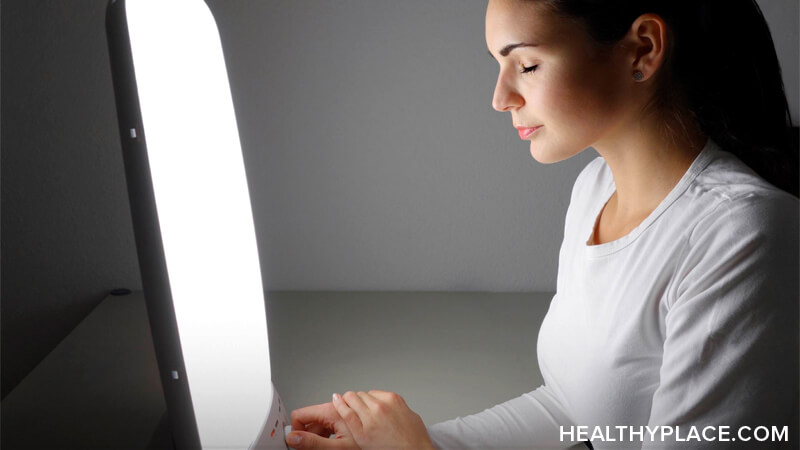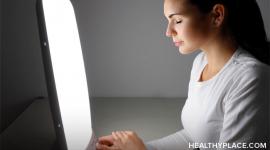SAD Light: Seasonal Depression Light Therapy for SAD

Seasonal affective disorder is a form of major depression with episodes that correlate to the time of year. Seasonal depression is most commonly seen during the winter, suggesting the decreased hours of sunlight are a factor in producing the symptoms of seasonal affective disorder. One effective SAD treatment combats this: light therapy.
Seasonal affective disorder (SAD) light therapy has been repeatedly shown as beneficial over multiple studies and multiple years and is now an accepted treatment. Most people using light therapy for SAD show improvement one week after starting treatment.1 One study of 100 people with SAD showed light therapy was equal in effectiveness to treatment with fluoxetine (Prozac), with light therapy producing results slightly faster.2
Light Therapy for Seasonal Affective Disorder (SAD)
Light therapy involves exposing the patient to a SAD light which emits a powerful, full-spectrum light, similar to the sun. This specialized seasonal depression light appears to create changes in the brain that effect mood.3 The seasonal affective disorder lamp is placed approximately 1 – 2 feet from the patient's eyes and angled so the light is coming from above the patient (those who do not have the light shining downwards do not respond as well to treatment2). SAD lights are used 15 – 30 minutes a day, typically in the morning; however, a doctor should decide on the best use of lights for SAD.
A complete understanding of how light therapy for SAD works is unknown, but it appears to be tied to the body's daily rhythm (circadian rhythm). Scientists have found a part of the eye that is not used for vision and instead delivers light information directly to the center of the brain, in the hypothalamus. This area is known to be the location of the "biological clock" in humans. Without enough light to this part of the brain, the circadian rhythm is altered, possibly producing depressive symptoms in some people.4
What to Look for in Seasonal Depression Lights
Lights for SAD come in many sizes and strengths. It's important to know what kind of light box to buy. A doctor should always be consulted before starting light therapy or buying a SAD lamp. Here some things to keep in mind about specific seasonal depression lights:5
- Evidence – is the light specifically designed for light therapy for SAD? Some lights have studies supporting their effectiveness while many do not.
- Intensity – it's critical to know how much light a SAD light is producing. Light intensity is measured in a unit called "lux." Patients typically want to receive 10,000 lux of light during treatment. However, each seasonal depression lamp can only produce a specific intensity at a given distance. For example, the patient may get 10,000 lux of light when sitting 18 inches away from the light, but will receive less if sitting farther away.
- UV light – UV light emitted should be minimized due to eye and skin damage risks.
- Blue light – there is some evidence to suggest that SAD lights emitting blue light are more effective; however, blue light may also pose a greater risk of harm to the eye.
- Design – can the light be positioned at the correct distance at a downward angle?
Cost can vary widely from $50 to $200. Often the cost is associated with SAD lamp quality and supporting evidence. Some of the options for SAD lights include:2
| Zadro |
About $50 from Target, Walmart |
Some Reports of quality problems |
| goLITE BLU energy light | $30 - 120 from Walmart, Costco, Amazon | 10,000 lux, proven effective |
| Sunlight Jr. | $200+ from Sunbox.com |
10,000 lux, a well-known and recognized company |
APA Reference
Tracy, N.
(2022, January 3). SAD Light: Seasonal Depression Light Therapy for SAD, HealthyPlace. Retrieved
on 2025, December 1 from https://www.healthyplace.com/depression/seasonal-affective-disorder/sad-light-seasonal-depression-light-therapy-for-sad


